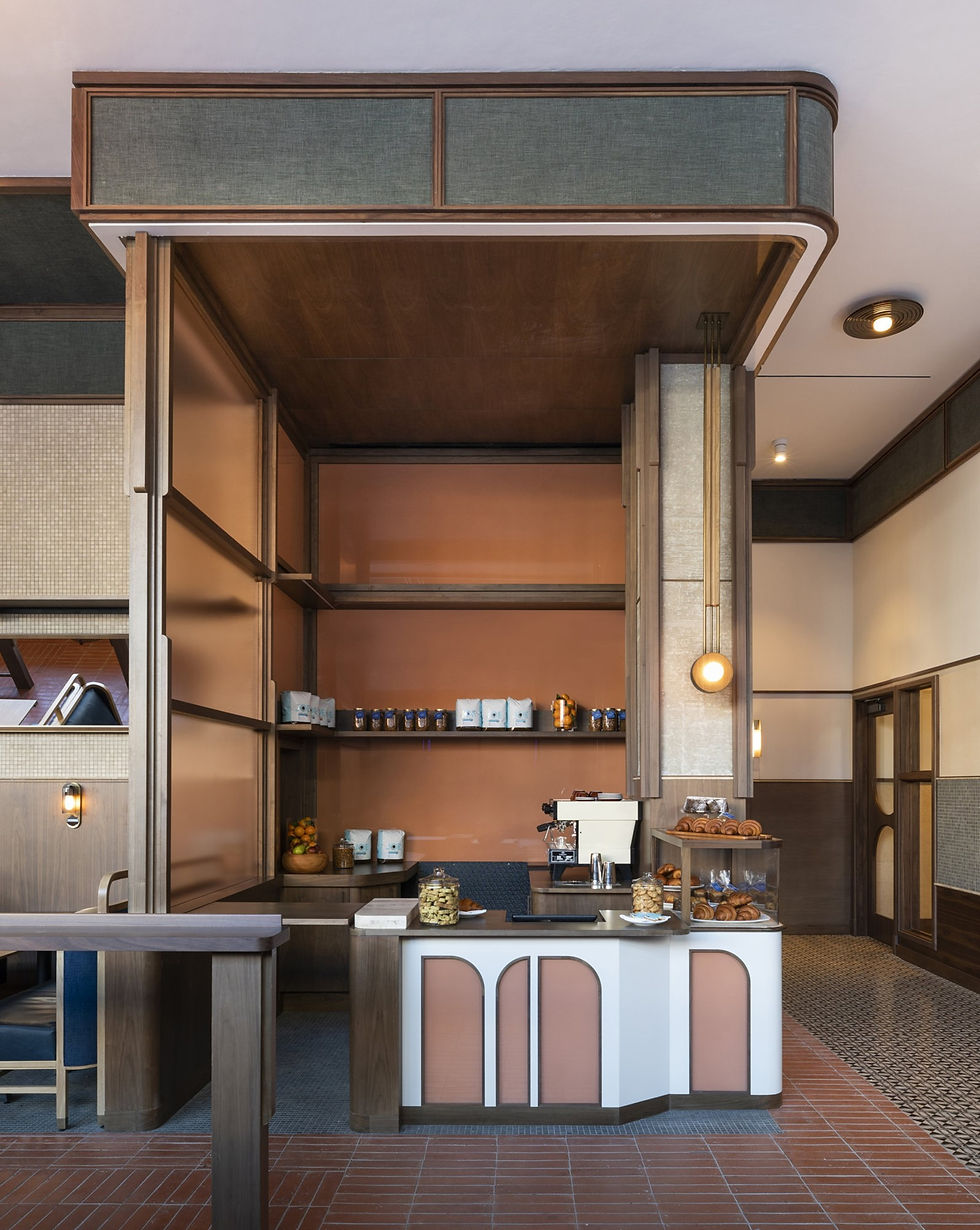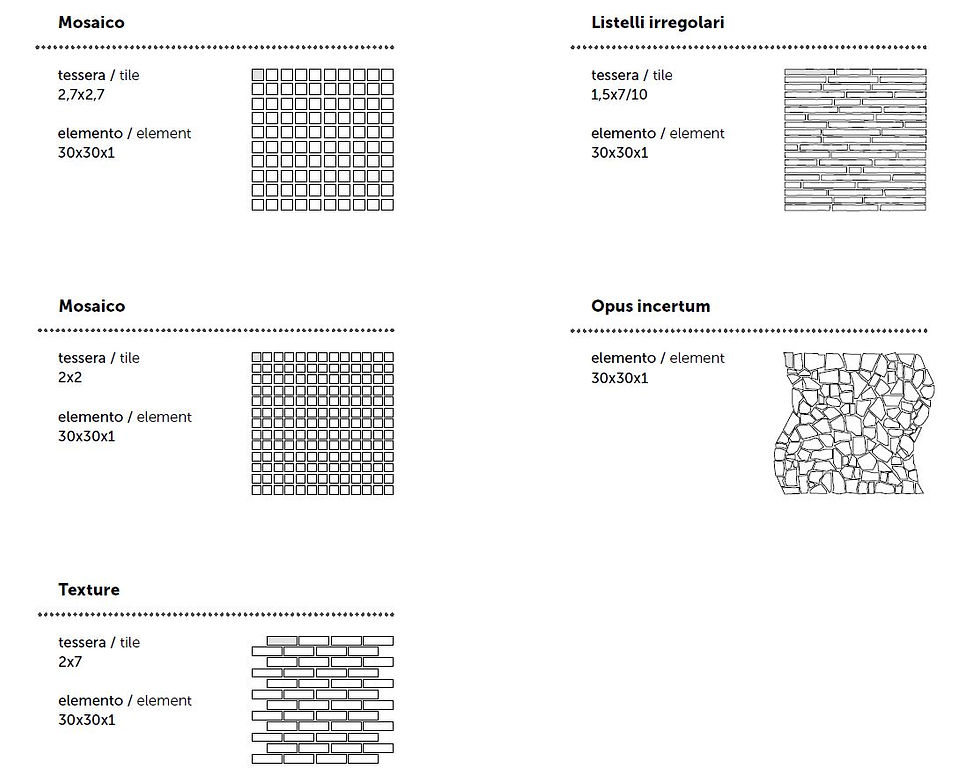Terra Cotta as an Interior Finish
- Timothy Lopresti

- Jan 20, 2021
- 4 min read
Updated: Feb 26, 2023
With a material directly rooted to the earth, brown and red natural hues tie an interior space to the outside world.

TERRA COTTA ON THE INSIDE
Terra cotta is a great material for interior finishing, and depending on the final design intent, it can be applied in several manners. The warmth and natural finish of the material can be used to not only balance against space's colder design elements but to showcase an ancient building material that has proven itself as far back as 5,000 years ago.
For wall coverings, tiles can be directly bonded to the wall substrate with adhesive or be hung and spaced from the substrate to create a chase for wires, piping, and other elements that work best hidden from sight.
In fact, the same system and tile profiles used for a building's exterior rainscreen facade can be used on the inside, following the same basic design principles. This design choice is a great way to bring the total aesthetic of a terra cotta cladding building into harmony, exterior, and interior.
Additionally, exterior systems typically used for a sun-shading effect in front of glazing can be reimagined as louvered partitions or screens to break up interior spaces but not create blind walls. Contemporary architecture quite often proposes solutions for interior partitions where the relationship between solid and void is not always in favor of the solid wall. These reimagined walls can hinder physical penetration yet allow vision and light to permeate.
Designers at Arte Charpentier Architectes brought both terra cotta to the foreground as a wall covering and partition for an internal space intended as a library. The system is realized with the louver element lamella to create divisions of the various areas. With element “doga” for wall portions, both elements with surface finish “litos” and installed with a mechanical fixing system.


Imprimerie Nationale by Arte Charpentier Architectes
Since terra cotta is such a flexible material with a range of shapes, colors, and finishes, complex designs and walls with depth and shadows can easily be realized. Terra cotta panels can even be custom manufactured to the exact shape and size a bespoke wall design requires.
Design studio MDU Architetti created a welcoming social bar using natural materials, including walls clad with ribbed terra cotta panels in the Litos Naturale finish.

Bar Sociale by MDU Architetti

Piastra - piana sottile lobby wall covering
Terra cotta flooring solutions are a tried and true interior finishing. Available in various shapes, finishes, and colors provides designers with great flexibility when specifying finishes. Additionally, terra cotta flooring has a slip resistance rating of R10 or higher, making it a great choice for high traffic areas.

Ristorante Penelope with Fornace Sannini tiles

Ristorante Maialino Mare DC by Parts and Labor Design with Vellutato rosato tiles
Photo: Julie Soefer
A few examples from our product library

Arrotato da crudo
Extruded terracotta with the rustic surface, known and used for decades owing to its particular brushed finish. This category is constituted by a wide range of products that have contributed to spreading the image of Tuscan tradition throughout the world. Its characteristic roughness is obtained by working the surface of the material with steel brushes before firing.

Medievale
The “Medievale finish” is obtained by following a specific technique: spreading out some ash under the wooden molds. When fired at 1000 C°, the ash gives a very nice and rustic finish (lighter color). The opaque light pink-white color absorbs the light and throws out unmistakable reflections and tones, and the irregularities make each element unique and unrepeatable.

Tradizionale (Classico)
Following drying, the material is extracted, and brick by brick, the edges are hand-trimmed with a knife. This “Tradizionale finish” is obtained by following a specific technique, which consists of spreading out some terracotta powder as well as some sand under the wooden molds. The result is a very natural and warm light red Terracotta color. The opaque red color and the irregularities make each element unique and unrepeatable.

Litos (Naturale)
Extruded and fired without surface interventions or treatments. The light and shaded finish obtained through the natural coloring of the salts brought to the surface before firing during the delicate drying phase.
Since floor tiles are supplied as a bulk building material, designers have full control of the final flooring texture (laying pattern). The arrangement of tile laying and the final size of the elements allows the flooring to be the centerpiece of built space and not merely a utilitarian means to an end.
A few examples of flooring texture (laying patterns)


Mosaic Solutions offer the possibility of using terra cotta in formats traditionally associated with glass or ceramic tesserae. It is possible to tile masonry kitchens, bathrooms, and curvilinear surfaces with a minute texture of terra cotta obtained with a complex manufacturing process: smoothing to obtain calibrated surfaces, cutting to obtain the required sizes, tumbling to round off sharp corners, installation, and manual gluing of all the elements onto a specific paper-mesh structure.
Terracotta mosaic materials come in boxes of 30x30x1 cm elements. The particularly smooth and velvety appearance and finish of the surface are midway between the sobriety of materials and polished products' perfection.







Comments